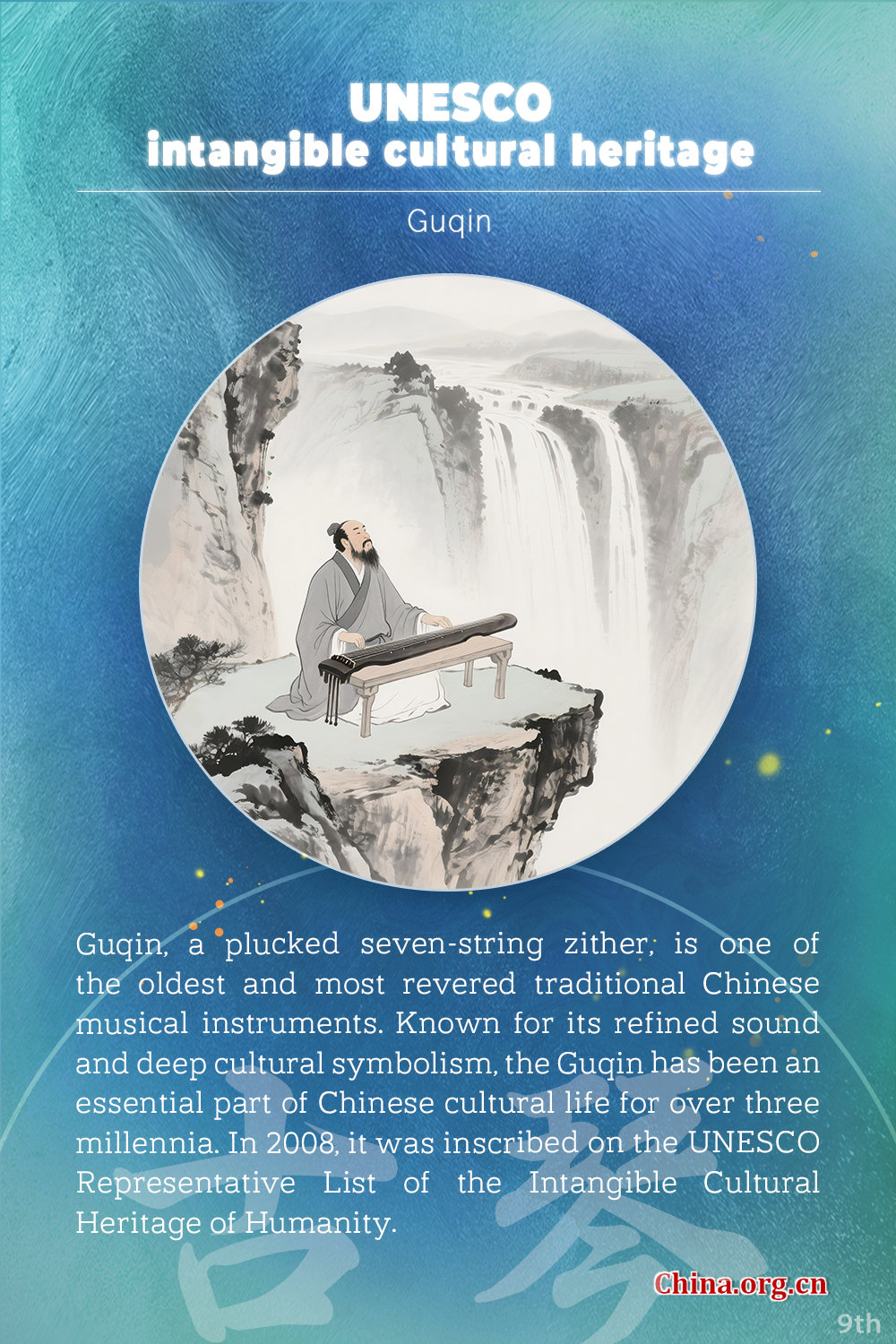еҸӮиҖғж¶ҲжҒҜ

UNESCO intangible cultural heritage: Guqin
Editor's note: Guqin, a plucked seven-string zither, is one of the oldest and most revered traditional Chinese musical instruments. Known for its refined sound and deep cultural symbolism, the Guqin has
been an essential part of Chinese cultural life for over three millennia.

In 2008, it was inscribed on the UNESCO Representative List of the Intangible Cultural Heritage of Humanity. The Guqin is celebrated not only for its distinctive, meditative sound but also for its close association with Chinese philosophy, poetry and calligraphy.
The origins of Guqin date back over 3,000 years. It has long been associated with Confucian values and the cultivation of moral character. Guqin was one of the four arts вҖ” along with calligraphy, painting and an ancient form of chess вҖ” that Chinese scholars were expected to master. Throughout the dynasties, it became a symbol of inner harmony, reflection and the spiritual quest of the literati class.
Guqin music is known for its quiet, subtle tones and wide range of expressive techniques. Its repertoire includes a mixture of ancient melodies вҖ” some dating back hundreds or even thousands of years вҖ” and more recent compositions. The instrument's playing techniques, such as sliding, plucking and harmonics, allow the performer to express complex emotions and philosophical ideas. Many Guqin pieces are linked with nature or friendship themes, such as "Running Water" and "Yangguan Sandie (Parting for Yangguan)."
Guqin playing developed as an elite art form, practiced by noblemen and scholars in intimate settings, and was therefore never intended for public performance.
In the 20th century, the Guqin faced significant challenges due to the changes of the times. The number of Guqin players and masters declined sharply, and many ancient instruments and manuscripts were lost.
However, recent decades have seen a revival of interest in the Guqin, both within China and internationally. Conservatories, cultural institutions, and independent scholars have worked to preserve and promote Guqin music through performances, recordings, academic research and education. Young people are increasingly drawn to the instrument as a symbol of cultural identity and spiritual depth.
Today, Guqin societies operate across China and abroad, organizing workshops, concerts and gatherings. Efforts have also been made to digitize ancient manuscripts and incorporate Guqin education into school curricula. Despite these positive developments, the tradition remains vulnerable due to its complexity, the limited number of skilled masters, and the challenge of maintaining traditions in a modernized society.
In recognizing the art of Guqin music, UNESCO highlighted its historical importance, artistic value and philosophical depth. The organization noted that Guqin music reflects key elements of traditional Chinese culture, including Confucianism, Taoism and Buddhism. Its meditative nature promotes introspection and harmony between people and the natural world.
UNESCO also emphasized the need to preserve Guqin's traditional transmission and craftsmanship methods, as well as to support efforts that ensure its continued practice and relevance in the modern era. The designation as Intangible Cultural Heritage aims to encourage both governmental and community support to preserve this extraordinary tradition for future generations.
Discover more treasures from China on UNESCO's ICH list:
вҖў 2024: Spring Festival
вҖў 2022: Traditional tea processing
вҖў 2020: Wangchuan ceremony, taijiquan
вҖў 2018: Lum medicinal bathing of Sowa Rigpa
вҖў 2016: Twenty-four solar terms
вҖў 2013: Abacus-based Zhusuan
вҖў 2012: Training plan for Fujian puppetry performers
вҖў 2011: Shadow puppetry, Yimakan storytelling
вҖў 2010: Peking opera, acupuncture and moxibustion, wooden movable-type printing, watertight-bulkhead technology of Chinese junks, Meshrep
вҖў 2009: Yueju opera, Xi'an wind and percussion ensemble, traditional handicrafts of making Xuan paper, traditional firing techniques of Longquan celadon, Tibetan opera, sericulture and silk craftsmanship, Regong arts, Nanyin, Khoomei, Mazu belief and customs, Dragon Boat Festival,Manas, Craftsmanship of Nanjing Yunjin brocade, Xinjiang Uygur Muqam art, Hua'er, China engraved block printing technique, Chinese traditional architectural craftsmanship for timber-framed structures, Chinese paper-cut, Chinese calligraphy
вҖў 2008: Kunqu opera














